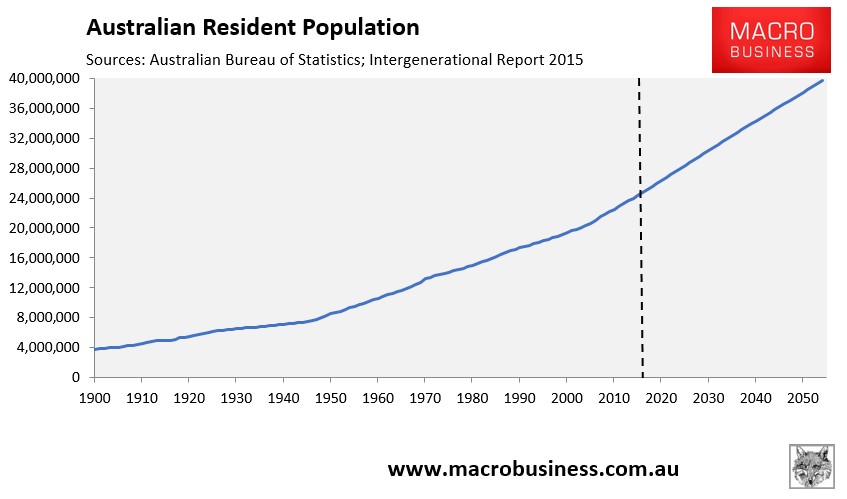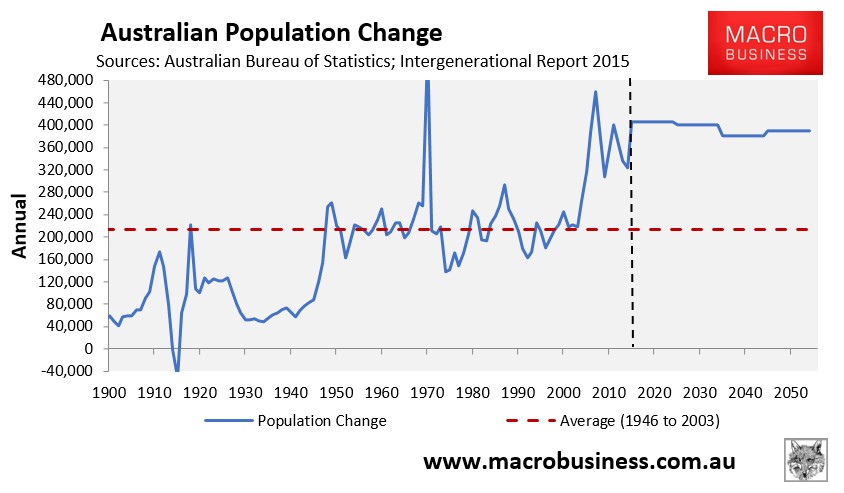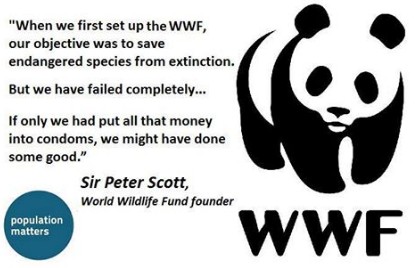One of the reasons why an increasing number of Australians voted for Pauline Hanson’s One Nation at the recent Federal Election is because they felt their concerns were not being represented by the mainstream parties.
One example of this is Australia’s immigration-driven population growth, which for more than a decade has lead the world and is on track to nearly double the nation’s population by 2055 to around 40 million people:

Driven by annual population growth that is nearly twice as high as the post-war average, mostly via immigration:

The massive rise in immigration began in the mid-2000s when former Prime Minister, John Howard, performed a ‘bait-and-switch’ on the Australian people whereby he slammed the door shut on the relatively small number of refugees arriving into Australia by boat all the while stealthily shoving open the door to economic migrants arriving here by plane.
John Howard never articulated to the Australian people that the Government was going to dramatically expand the nation’s immigration intake. Why? Because he knew the electorate would be against it. Instead, Howard scapegoated refugees to give the impression that he was stemming the migrant inflow while proceeding in secret with his ‘Big Australia’ plan.
Rather than being honest with the electorate, the Rudd/Gillard Governments and the Abbott/Turnbull Governments continued the subterfuge. There has never been any community consultation, any national discussion, nor any mandate to proceed with such high levels of immigration.
Amazingly, given their purported environmental credentials, The Greens have been conspicuously absent from the ‘Big Australia’ debate. While they have rightly voiced their opposition to the disgusting treatment of asylum seekers (whose numbers are small), and have at least published an explicit population policy (albeit absent of specific numbers and targets), The Greens have remained deafly silent on Australia’s overall immigration intake and have refused to argue the case publicly for a smaller and more sustainable population for Australia.
The Greens’ silence comes despite several Australian environmental organisations and advocates calling for Australia’s population to be stabilised.
In 2010, the Australian Conservation Foundation (ACF) called for Australia’s population to be stabilised and nominated human population growth as a “key threatening process” to Australia’s biodiversity.
Well-known environmentalist and former Australian of the Year recipient, Professor Tim Flannery, has estimated that the long-term human carrying capacity of the Australian continent and Tasmania might be as low as 8 million to 12 million people and has many times called for the nation’s population to be stabilised.
In 1994, when Australia’s population was just under 18 million, the Australian Academy of Science (AAS) convened a symposium on the future population of Australia. Its analysis was extended to Australia’s resources of water, minerals and arable land, and the interactions between present lifestyle and present environmental damage, and between future expectations and the costs of increasing population.
The AAS cautioned that “if our population reaches the high end of the feasible range (37 million), the quality of life of all Australians will be lowered by the degradation of water, soil, energy and biological resources” and concluded that “the quality of all aspects of our children’s lives will be maximised if the population of Australia by the mid-21st Century is kept to the low, stable end of the achievable range, i.e. to approximately 23 million”. Just 22 years later, Australia has already breached 24 million, thus exceeding the AAS’ recommended maximum population.
International organisations and commentators, too, have raised alarm at population growth’s impacts on the environment.
The World Wildlife Fund (WWF) has nominated human population growth as the key risk factor for endangered species, noting that “the current rate of extinctions is 100 times what would be considered normal without the impact of human activity… more of us means more of that” (see below graphic).

And just last week, legendary documentary maker, David Attenborough, nominated population growth as the most fundamental issue facing the world.
With the debate over immigration heating-up both in Australia and abroad, it is high time that The Greens entered the fold and advocated on behalf of Australia’s environment.
In order to satisfy its support base, and ensure social justice concerns are met, I recommend that The Greens argue to increase Australia’s humanitarian intake (currently 14,000 per year) while cutting back massively on Australia’s economic intake (currently around 190,000 people per year). This way, it could achieve both goals: reducing population growth and saving the environment while also being a good and caring global citizen. After all, when it comes to protecting the environment, it is the overall numbers that matter, not how the migrants come.
Of course, The Greens should also highlight the associated benefits from running a moderate immigration program, including less pressure on housing and infrastructure. But the environment should be its main focus.
The key point is that The Greens must stop ignoring the whole population issue and actively enter the debate. Otherwise, they will be left behind – both in a policy sense and at the ballot box.

